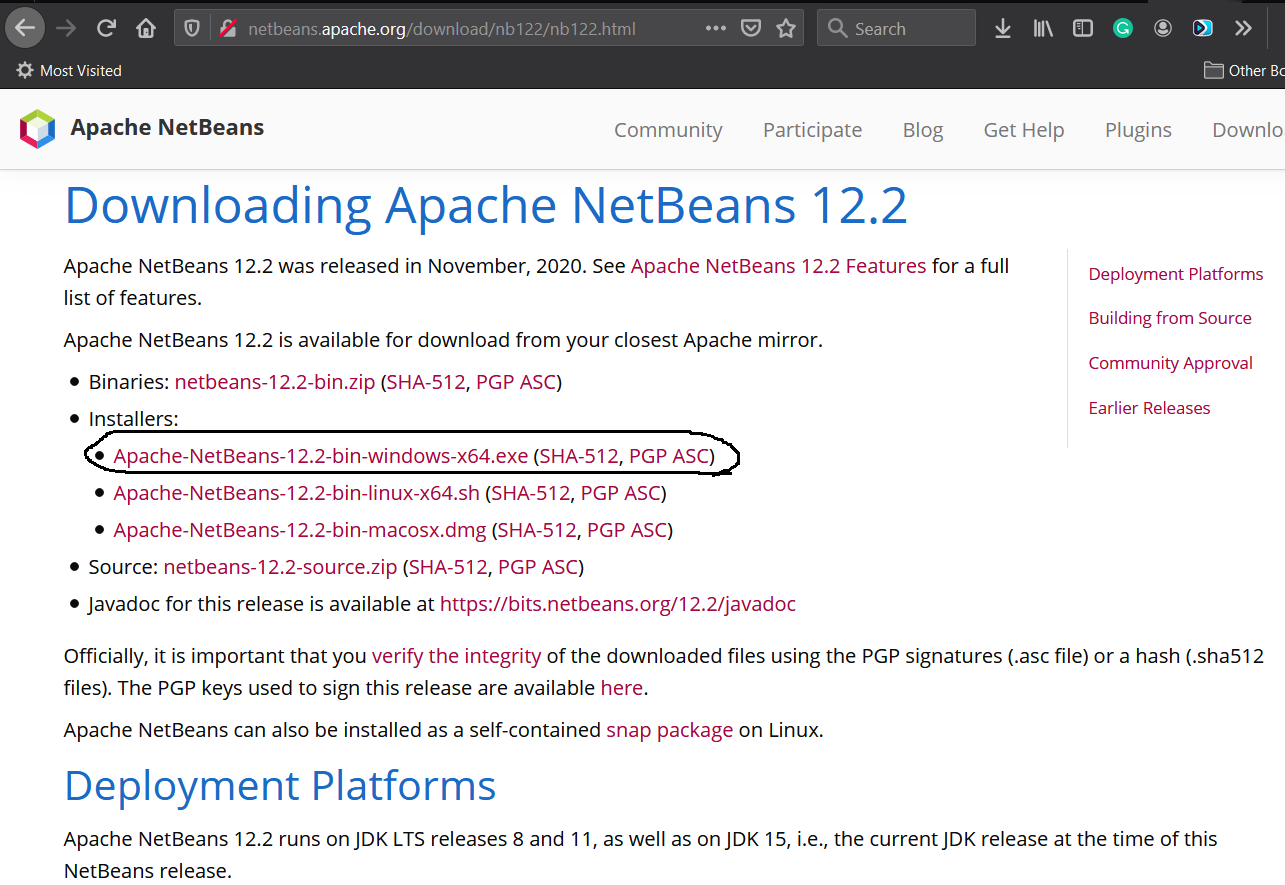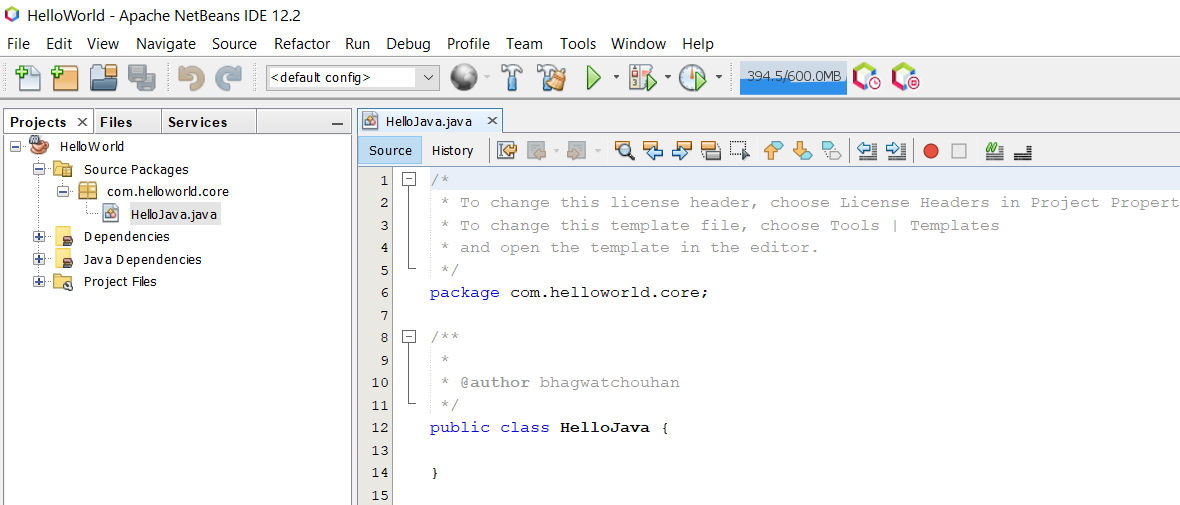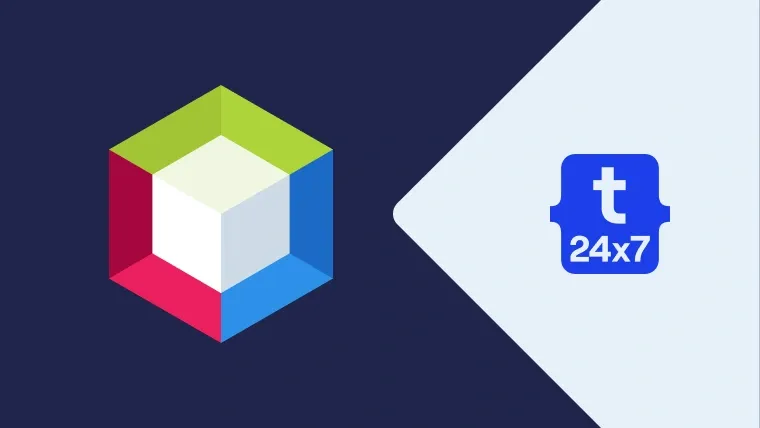NetBeans is one of the most popular and free IDE used to develop Java and JEE applications. It provides several in-built features including code hinting, database tool, git, svn, etc required to develop software using Java. This tutorial provides all the steps required to install NetBeans 12 for Java development on Windows 10 using the installer provided by Apache. The highlights of NetBeans are available on the Official Page from Apache as shown in Fig 1.

Fig 1
Prerequisites
NetBeans assumes that the appropriate version of JDK is installed on the System. NetBeans 12 needs at least JDK 8 to continue the installation. You can follow How To Install Java 15 On Windows, How To Install OpenJDK 15 On Windows, or How To Install Java 8 On Windows 10 to install the most recent version of JDK on your Windows system.
Download NetBeans 12
Click the Find Out More Button as shown in Fig 1. It will navigate to the NetBeans Features Page as shown in Fig 2.

Fig 2
Now click the Download Button to navigate to the Downloads Page of NetBeans as shown in Fig 3.

Fig 3
I have highlighted the download options for windows using the installer. Now click the Windows Installer Link. It will open the page having download links from the mirror sites as shown in Fig 4.

Fig 4
Now click the suggested download link as highlighted in Fig 4. It will start downloading the most recent release of NetBeans 12.
Install NetBeans 12
In this step, we will install NetBeans 12 for Java on Windows 10 using the installer downloaded by us in the previous step. Confirm the currently installed and active Java version as shown in Fig 5.

Fig 5
Execute the installer to start installing NetBeans on Windows. It will ask for system permissions to continue the installation. Click the Yes Button to continue the installation. Next, it will show the Welcome Screen having options to choose the components as shown in Fig 6.

Fig 6
It provides options to customize the components to be installed using the Customize Button as shown in Fig 7.

Fig 7
I kept all the components selected and clicked the Next Button to continue the installation. The installer asks to accept the License Agreement on the next screen as shown in Fig 8.

Fig 8
Now click the Next Button to configure the installation path and JDK path as shown in Fig 9.

Fig 9
Click the Next Button to progress the installation. The next screen shows the installation summary and provides options to get updates as shown in Fig 10.

Fig 10
Now click the Install Button to start the installation. It will show the installation progress as shown in Fig 11.

Fig 11
It will show the Success Screen after completing the installation as shown in Fig 12.

Fig 12
Now click the Finish Button to close the installer.
Launch the IDE
We can launch the IDE using the launcher icon placed on the Desktop. It might ask to import settings from the old installation as shown in Fig 13.

Fig 13
Choose the appropriate option. It will start the IDE and shows the Welcome Screen and the Default Layout as shown in Fig 14 and Fig 15.

Fig 14

Fig 15
This completes the installation of the most recent version of NetBeans i.e. NetBeans 12 on Windows 10.
Create Java Project
Start the IDE in case it's not running. Now click the File Options on Main Menu -> New Project. It will show the New Project Wizard as shown in Fig 16.

Fig 16
Select Java with Maven from the Categories option and also select Java Application from Projects option as highlighted in Fig 16. The NetBeans 12 will show a message in the description section to enable appropriate plugins required for Java development, in case it's the first project. Now click the Next Button. On the next wizard, NetBeans will find the corresponding plugins required for Java development as shown in Fig 17.

Fig 17
Now click the Download and Activate Button to download and activate the required extensions. The next screen provides options to confirm downloading the nb-javac extension as shown in Fig 18.

Fig 18
Click the Next Button to confirm the installation. The next screen asks to accept the License Agreement as shown in Fig 19.

Fig 19
Now click Install Button to start installing the nb-javac extension. It will show the installation progress and the success message as shown in Fig 20 and Fig 21.

Fig 20

Fig 21
Now click Finish Button to complete the installation of the nb-javac extension. The next screen shows the progress of the Java SE activation as shown in Fig 22.

Fig 22
Once JAVA SE is activated, we can continue with the project configuration as shown in Fig 23.

Fig 23
Now click the Finish Button to complete the project set up. The project with the default package created by NetBeans looks like Fig 24.

Fig 24
Hello Java
In this step, we will write our first program and execute it on the console. Now right-click on the default package and choose Java Class as highlighted in Fig 10.

Fig 25
The next screen provides options to configure our first Java Class name as shown in Fig 26.

Fig 26
Now click the Finish Button to create the class file. It will create the Java class using the default template as shown in Fig 27.

Fig 27
Now update the class file to print Hello World on the console as shown below.
package com.helloworld.core;
public class HelloJava {
public static void main( String[] args ) {
System.out.println( "Hello World !!" );
}
}Now right-click on the HelloJava.java file in the Projects Window on the left panel. Also, click on Run File to execute the program as shown in Fig 28. You can also select the File on Projects Window and press Shift + F6 to execute the program.

Fig 28
It will take some time for Maven to download all the required dependencies for the first time. Finally, it shows the output after compiling and building the project as shown in Fig 29.

Fig 29
These are the basic steps required to write and execute Java programs with Maven using NetBeans 12.
Summary
This tutorial provided all the steps required to install the most recent version of NetBeans 12 on Windows for Java development.

